site search
online catalog
CONFEDERATE CAPTURED & COLLECTED "POTSDAM" TYPE MUSKET (THE PUMPKIN THROWER)

Hover to zoom

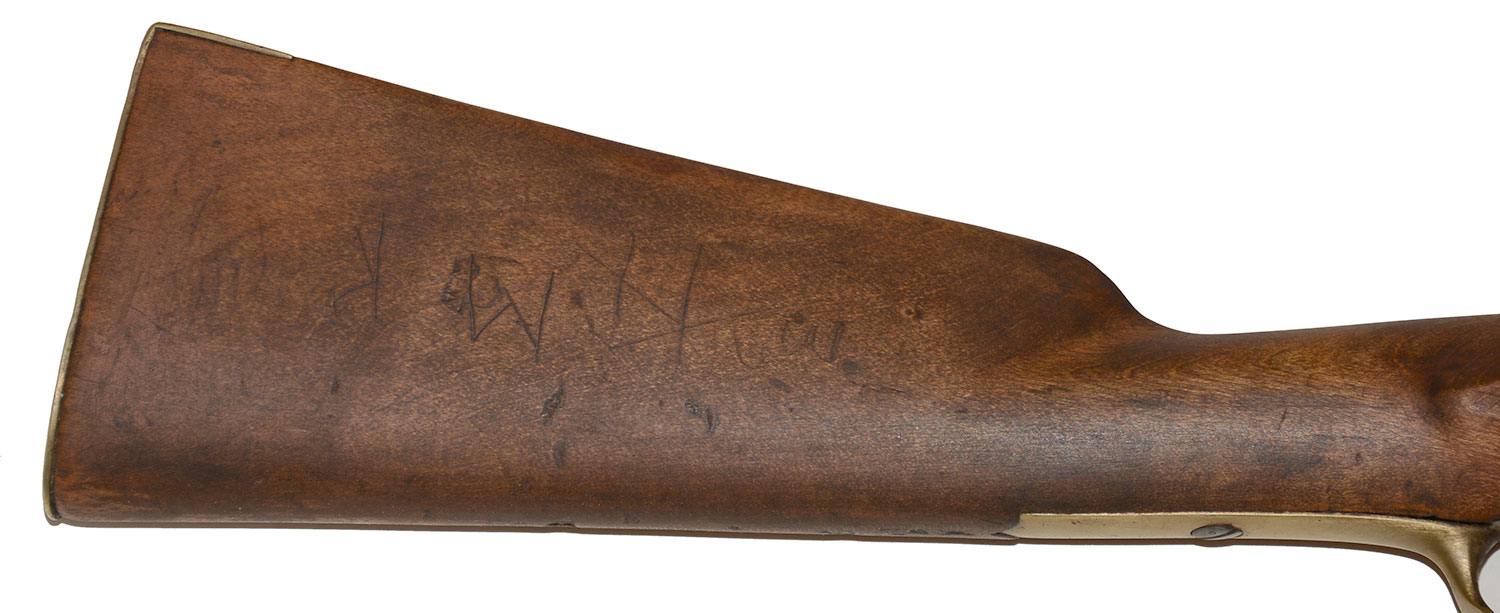


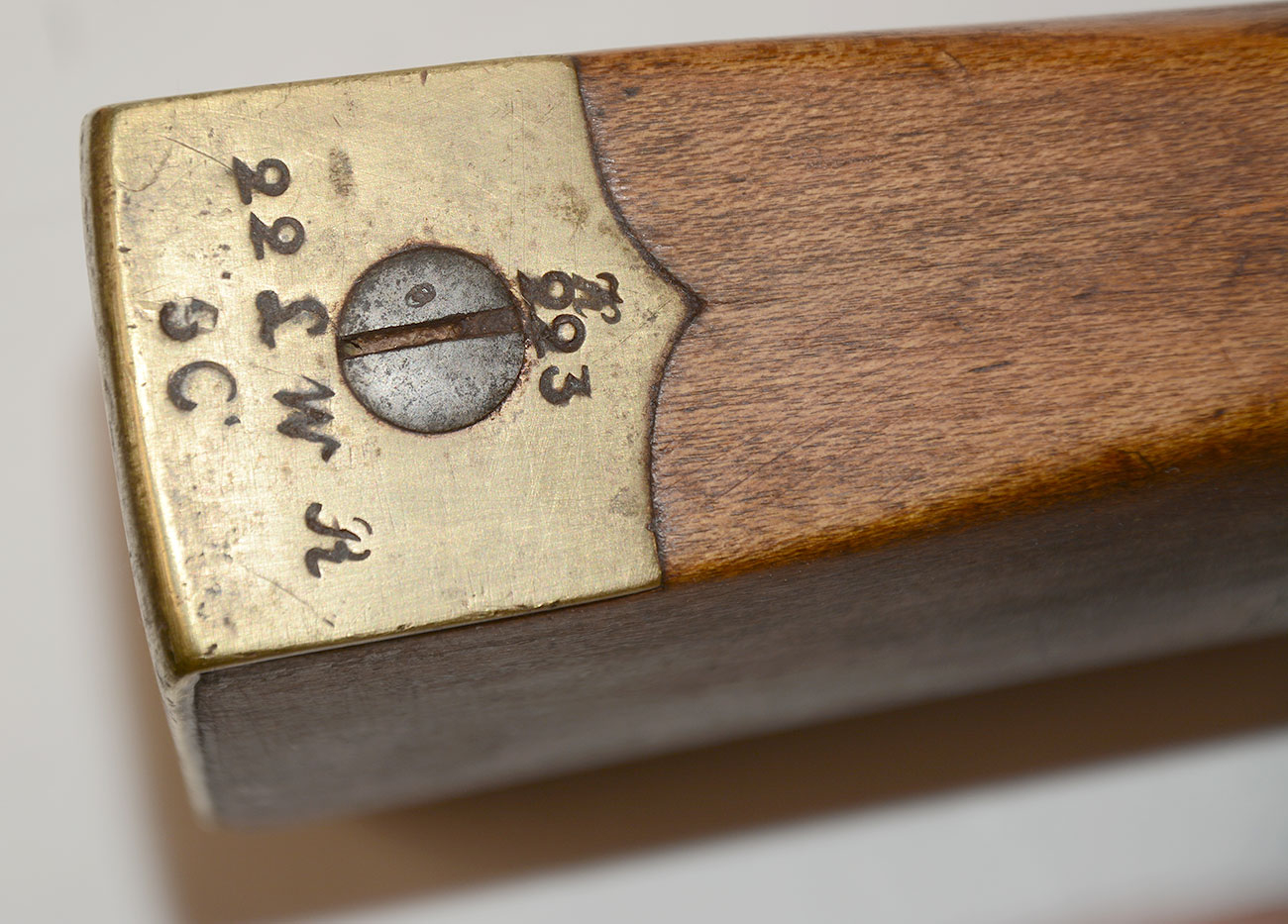


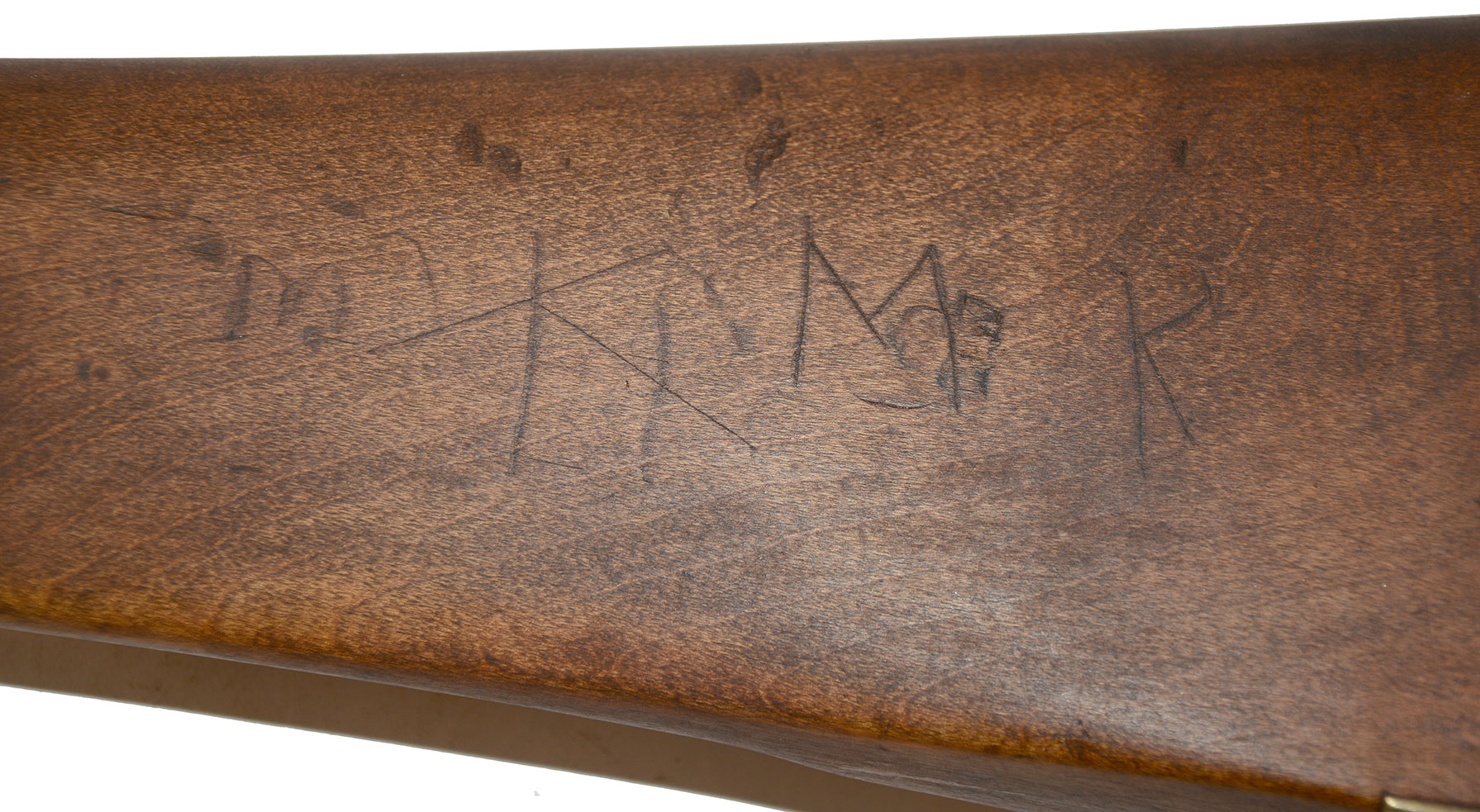


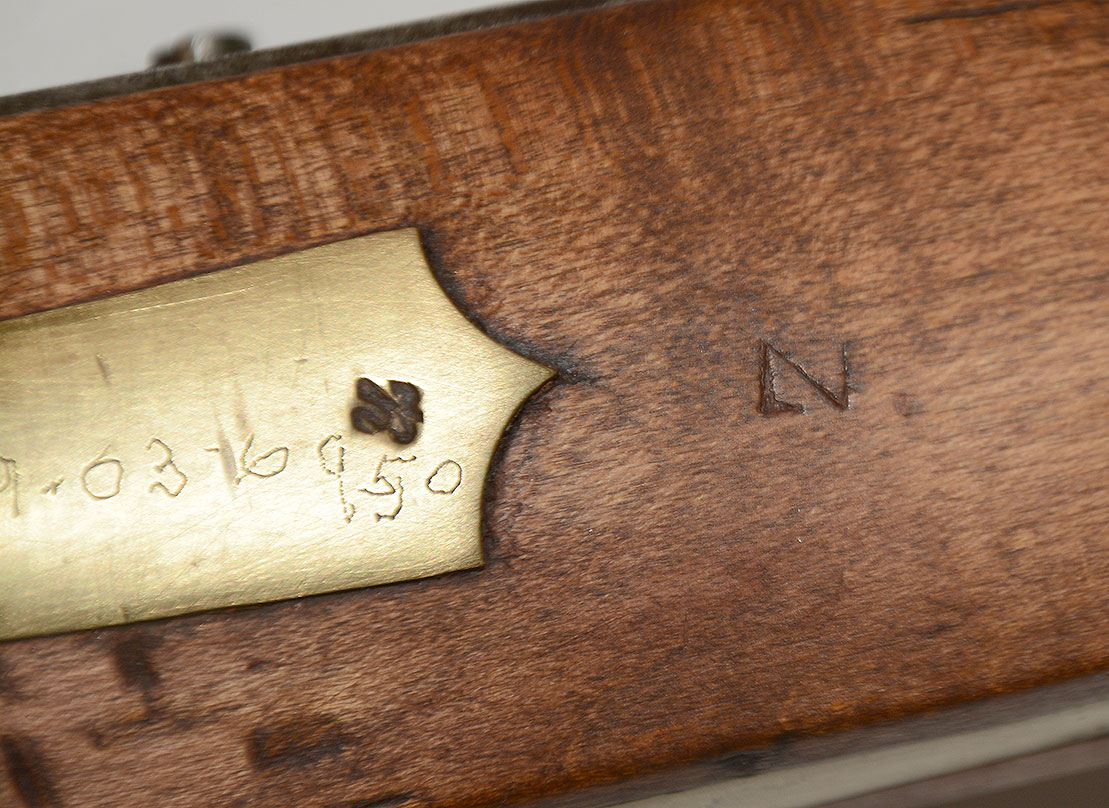
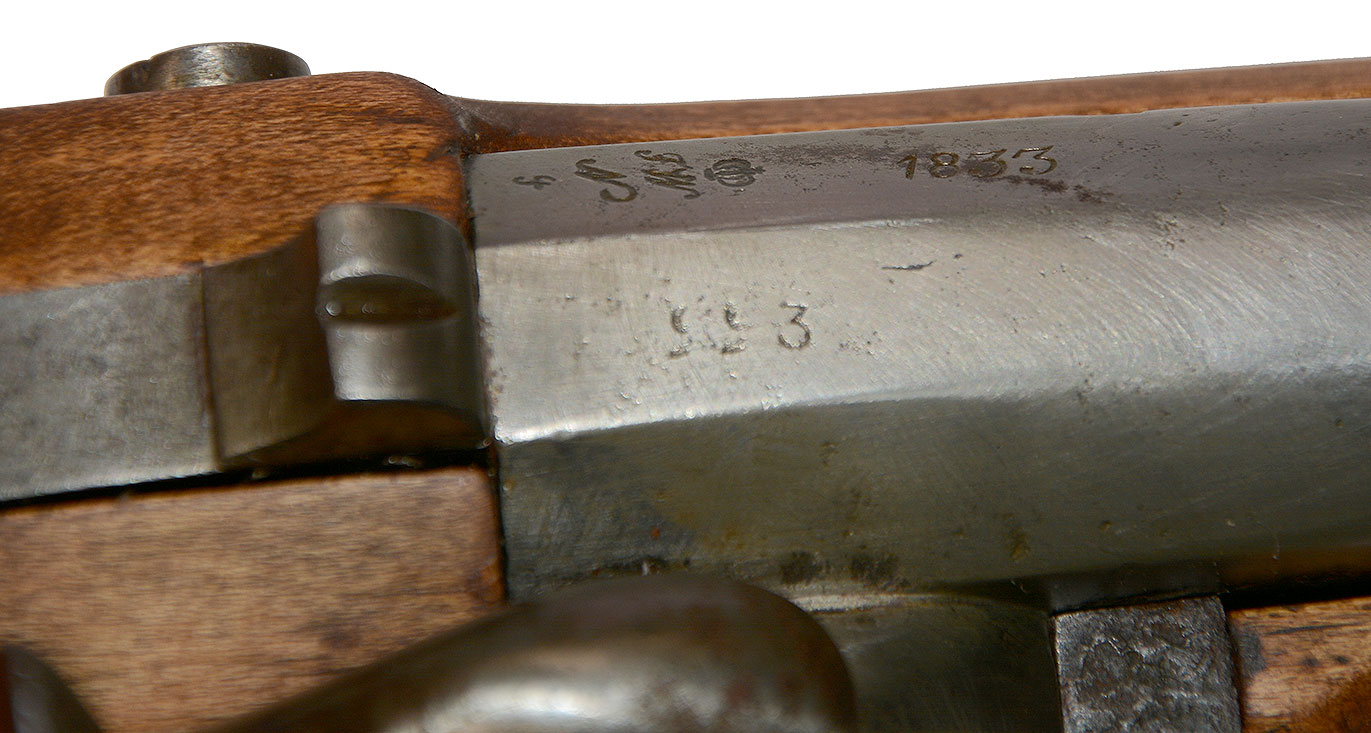
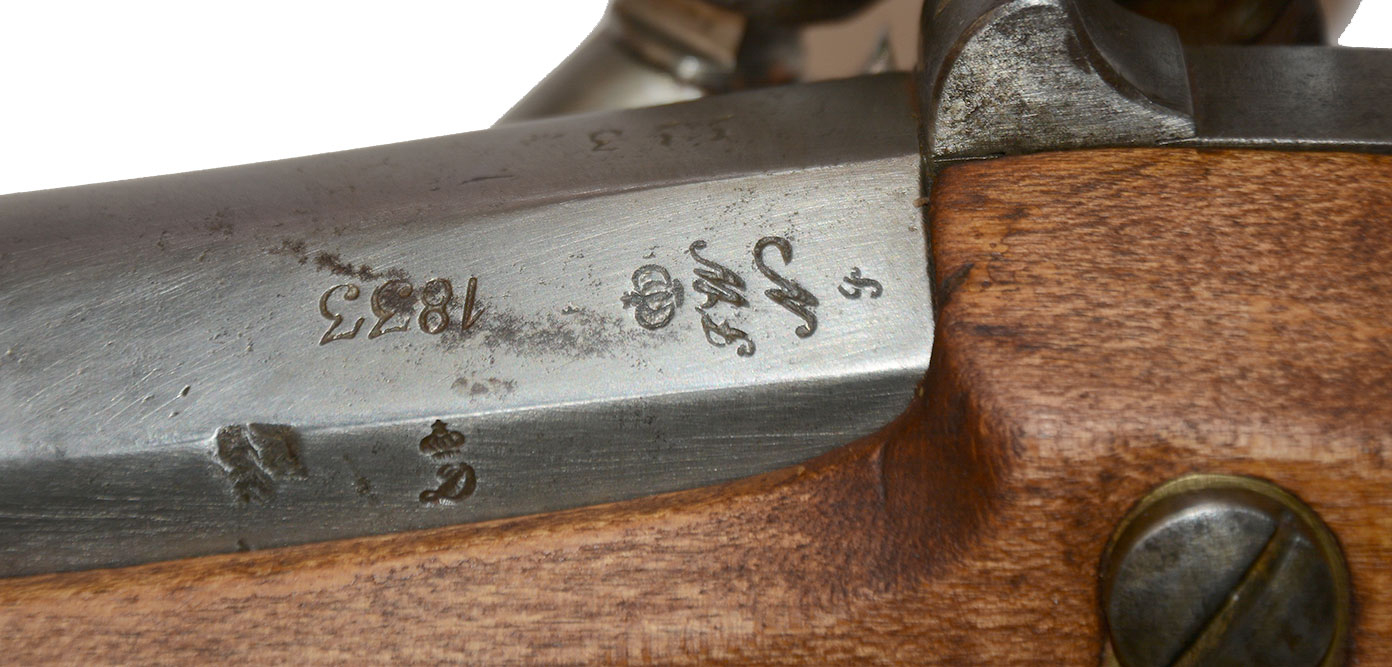
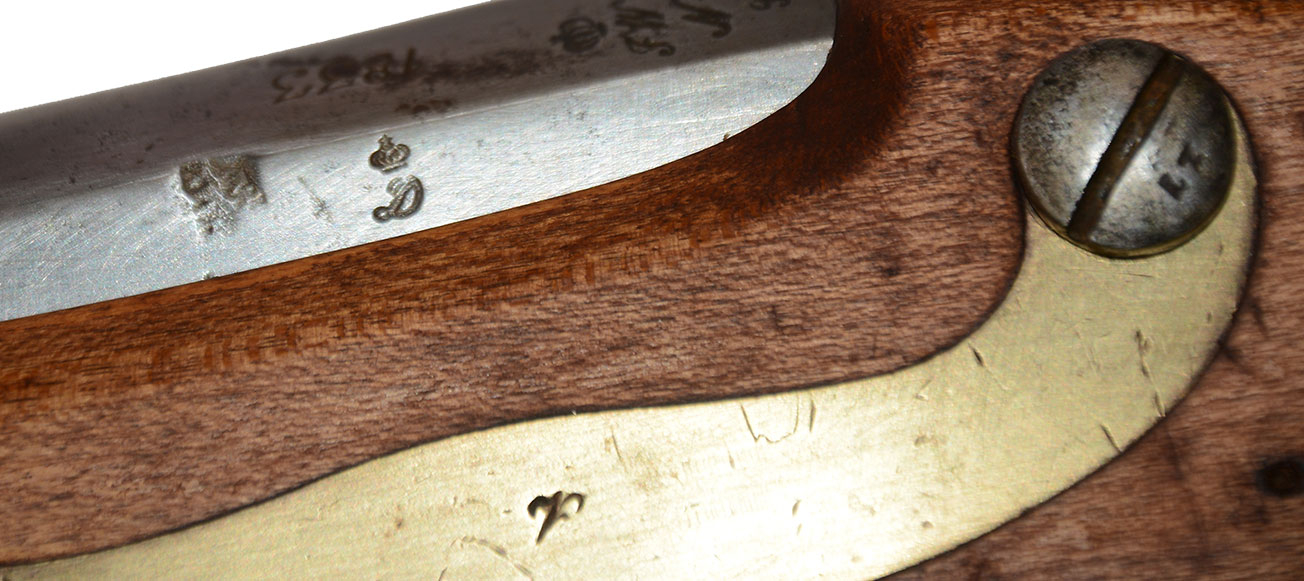

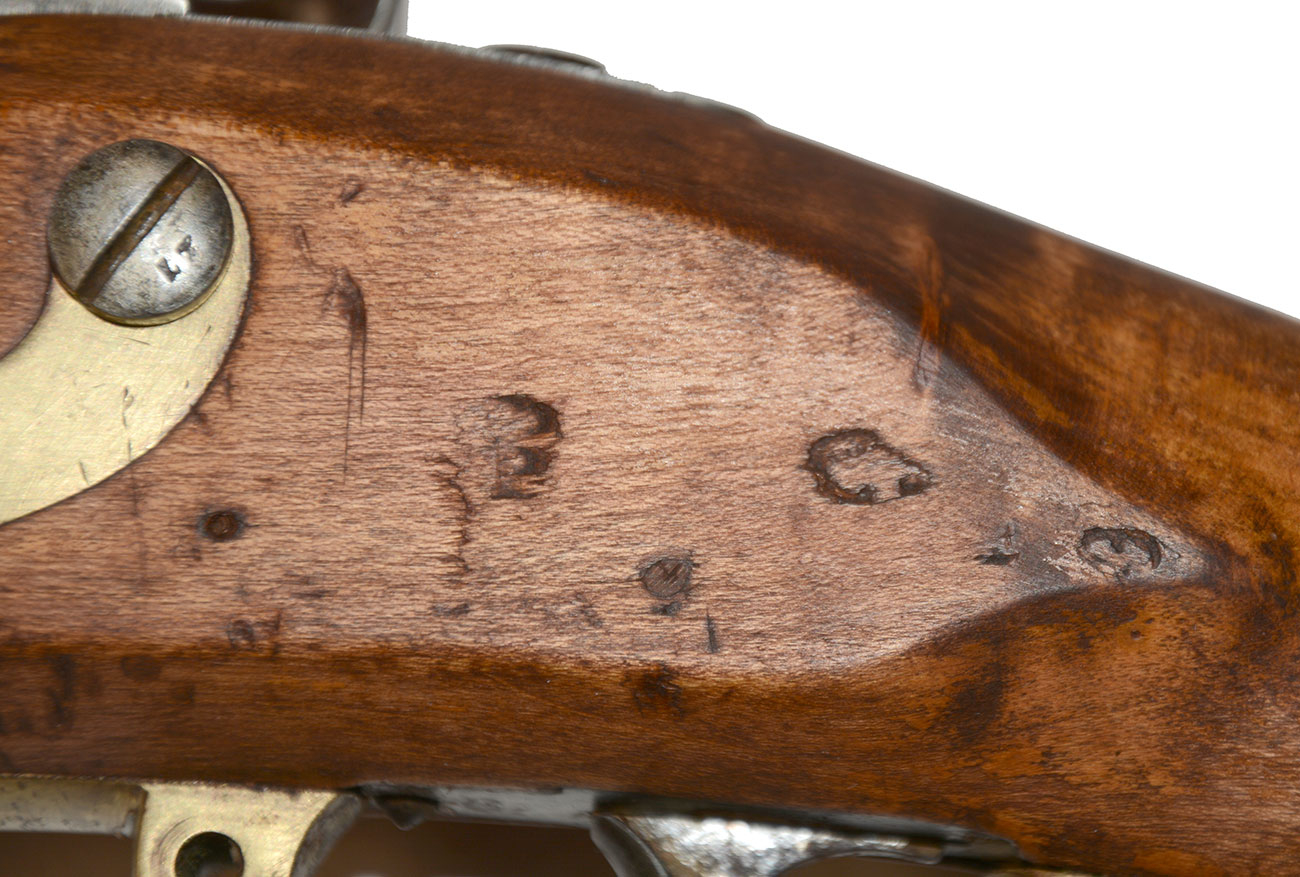

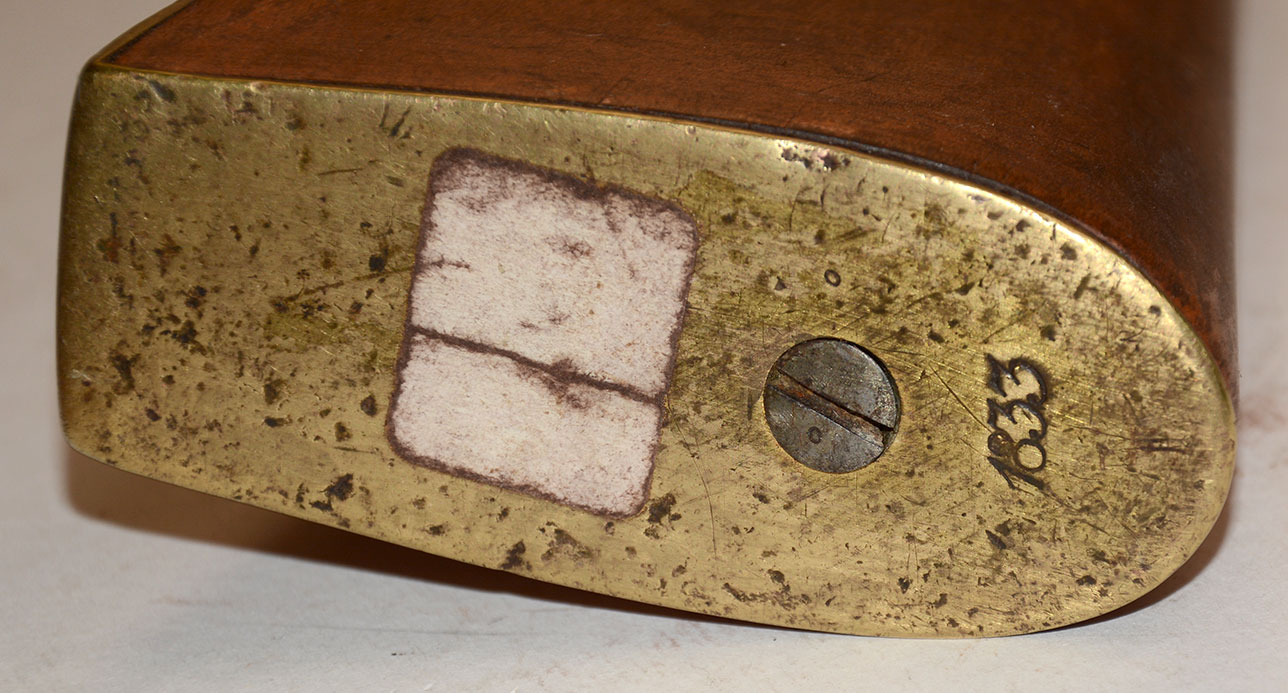


$2,950.00
Quantity Available: 1
Item Code: 490-7371
Shipping: Determined by Method & Location of buyer
To Order:
Call 717-334-0347,
Fax 717-334-5016, or E-mail
The Prussian model 1809 measures 56 and 1/2 inches in overall length and has a 41 and 1/4-inch-long barrel. The caliber is.72 and it is smoothbore. The barrel is bright as originally made. There is little pitting with not unsightly mottled areas of patina along the length of the barrel. The spoon for securing the bayonet is in place under the barrel. This weapon was originally manufactured as a flintlock and later, prior to 1841, converted to a percussion firing system using a curved cone bolster seat that was forged directly onto the breech. By the year 1841 such muzzle-loading arms were becoming obsolete in Prussia with the introduction of the "game changing" Dreyse Needle Fire Rifle. The production year 1833 is stamped on both the left side of the breech flat as well as the bottom face of the butt plate. Other markings include the letter "FW" (King Frederick Wilhelm) located below a crown. This Prussian royal cipher is also stamped into several places on the musket including the left-hand side of the butt, left side flat of the breech and on the lock plate face above the armory name of "NEISSE" The barrel is secured to the stock by three brass bands retained by springs; the upper band is double-strapped. There are matching assembly digits stamped into the bands as well.
The sling swivels are now missing but were attached to the trigger guard and to the center band. The trigger guard, barrel bands and butt-plate are all of brass. Both of the finials on the trigger guard and the toe of the butt-plate terminate in a three-pointed end design. There is an old collection or museum number engraved on the front end of the trigger guard. Located on the butt-plate are a series of stamped assortment of numbers, including the year of production 1833. Engraved on the top of the butt plate is the Prussian regimental designation which when translated reads: 22 Landwehr Regiment 3rd Company. The serial number of the musket is "993" and this appears on the butt plate and barrel. Located on the left side of the butt is a recessed carved cheek-rest. The rear sight is composed of a simple notched iron block mounted atop the barrel tang. The front sight is a brass blade soldered onto the strap of the top barrel band. The ramrod is trumpet-shaped is drilled and tapped on its face for the attachment of a worm or ball puller. The beech wood stock has a rich blonde color and is in excellent condition with several Prussian inspection stampings and royal property designations. The mechanics are perfect. It is conceded that all these Prussian muskets were early war Northern Imports. There exists no official Confederate correspondence in regard to such being purchased and imported by them. Rest assured plenty were captured!
This is one of the ubiquitous Confederate C & R (Captured & Collected) or "Alphabet Guns". These weapons distinguished by their marks are covered in Steven W. Knot’s “’Captured and Collected’ Confederate Reissued Firearms.” According to Knott’s research CS Ordnance teams, aided by some civilians, gathered as many as 200,000 firearms from battlefields during the war, mostly in the eastern theatre, where Lee’s victories left them in possession of the field. Along with another 50,000 or so turned in by CS units, these weapons went to CS facilities at Danville, Staunton, Lynchburg, and Richmond for cleaning and repair and eventual reissue to Confederate troops. These letters which include (identified to date) "Q", "A", "T", "F", "Z" and "&" were stamped on the arms typically, but not always, in front of the trigger guard. The letter "Z" in this case is stamped in the wood ahead of the trigger guard. The “Z” is associated with Captain Louis Zimmer, who supervised Confederate Ordnance cleaning and repair operations at Richmond from late 1864 to early 1865. This is particularly interesting to the arms student because these heavy muskets derogatorily referred to as "Pumpkin Throwers" were never loved by their owners and were discarded or exchanged as fast as possible early in the war or so the story goes. And yet here is one that was picked up or captured and then cleaned and repaired late in the war, very late in the war, and subsequently re-issued to a Confederate who carved his initials "M.K." into the stock twice. This is the second one of these Potsdam alphabet guns known to us. The other was cut down into a carbine at an arsenal and re-issued to cavalry. In both cases these arms would be deadly firing buckshot and ball. This is a really intriguing weapon, and it is in wonderful condition. [PE][ph:L]
DISCLAIMER: All firearms are sold as collector's items only - we do not accept responsibility as to the shooting safety or reliability of any antique firearm. All firearms are described as accurately as possible, given the restraints of a catalog listing length. We want satisfied customers & often "under" describe the weapons. Any city or state regulations regarding owning antique firearms are the responsibility of the purchaser. All firearms are "mechanically perfect" unless noted, but again, are NOT warranted as safe to fire!
~~~~~~~~~~~~~~~~~~~~~~~~~~~~~~~~~~~
THIS ITEM, AS WITH ALL OTHER ITEMS AVAILABLE ON OUR WEB SITE,
MAY BE PURCHASED THROUGH OUR LAYAWAY PROGRAM.
CLICK HERE FOR OUR POLICIES AND TERMS.
THANK YOU!
Inquire About CONFEDERATE CAPTURED & COLLECTED "POTSDAM" TYPE MUSKET (THE PUMPKIN THROWER)
Most Popular
Historical Firearms Stolen From The National Civil War Museum In Harrisburg, Pa »
Theft From Gravesite Of Gen. John Reynolds »
Selection Of Unframed Prints By Don Troiani »
Fine Condition Brass Infantry Bugle Insignia »
featured item
IDENTIFIED ISSUE RED BLANKET OF THEODORE P. BOWKER 13th MASSACHUSETTS - DIED OF WOUNDS AT ANTIETAM!
This is a rare, early-war, identified Massachusetts issue red blanket carried by a soldier in the 13th Massachusetts who was wounded at Antietam on Sept. 17, 1862, and died of those wounds at a U.S. hospital at Rappahannock Station on November 12.… (490-7138). Learn More »
site search
Upcoming Events
The shop is currently closed so that we may conduct our annual inventory. We are available by phone… Learn More »


